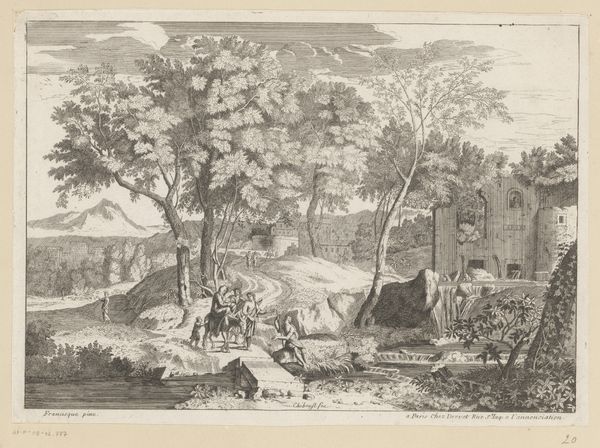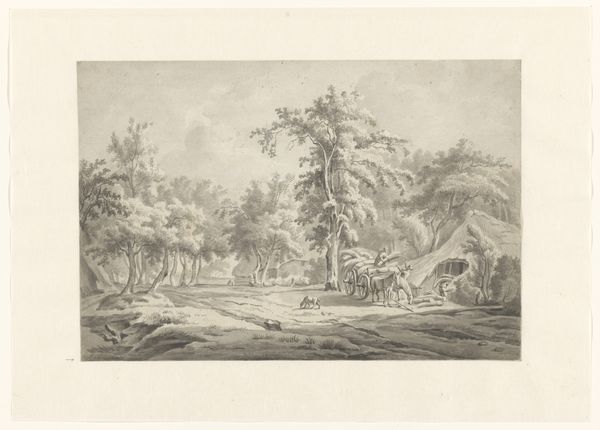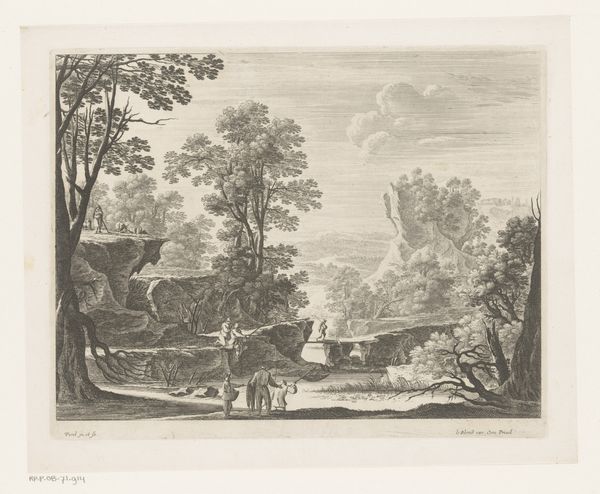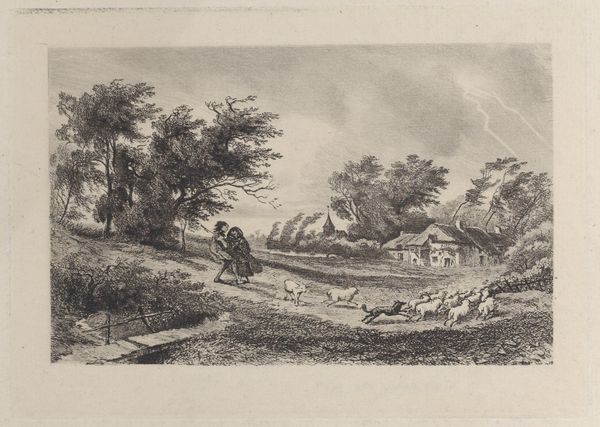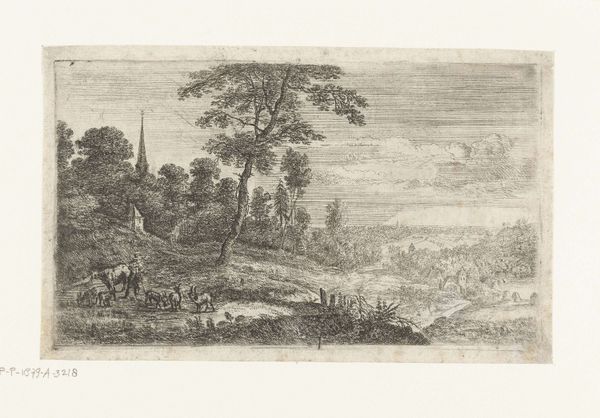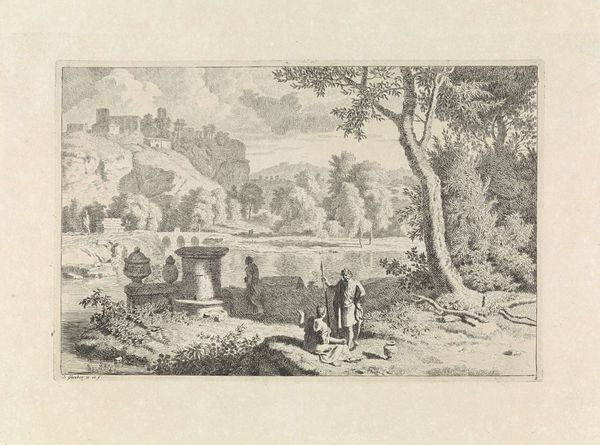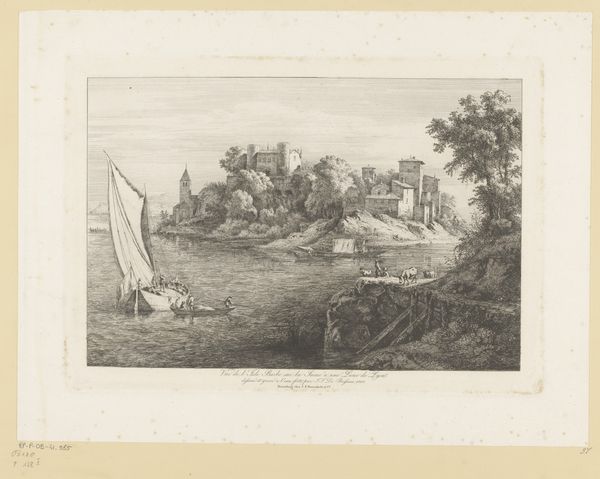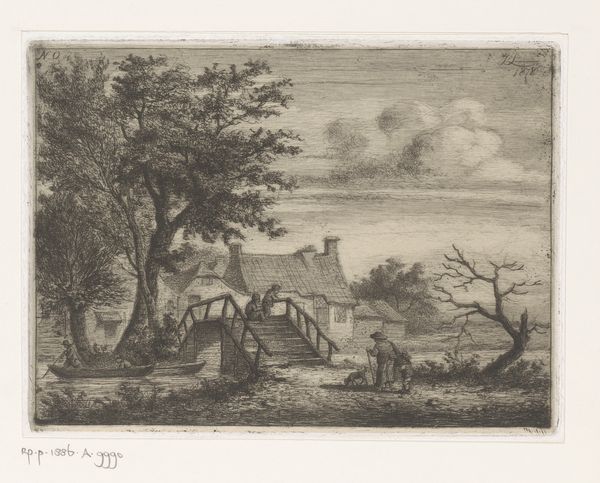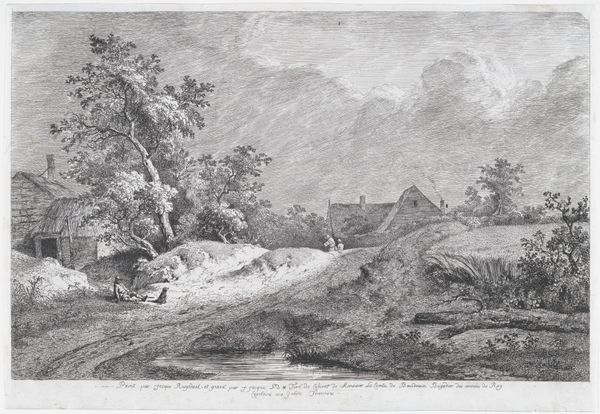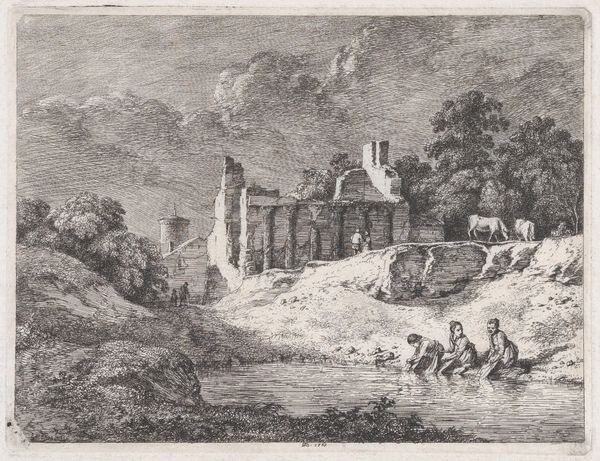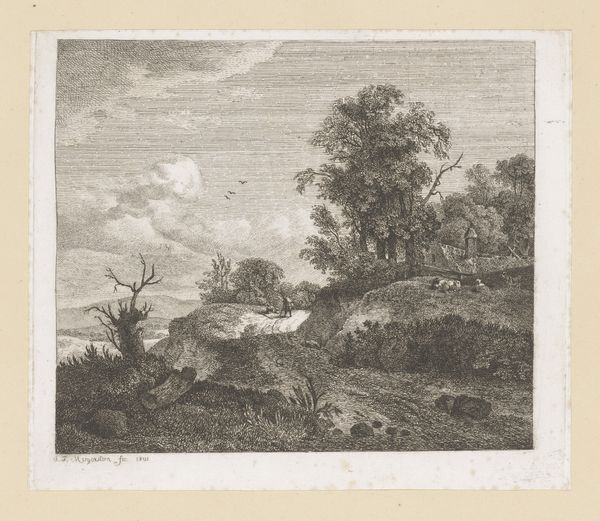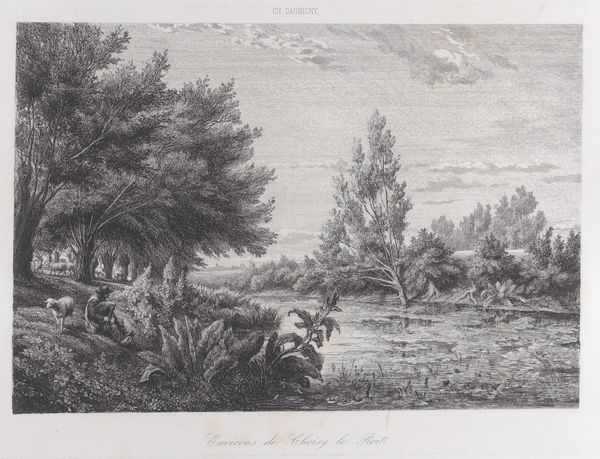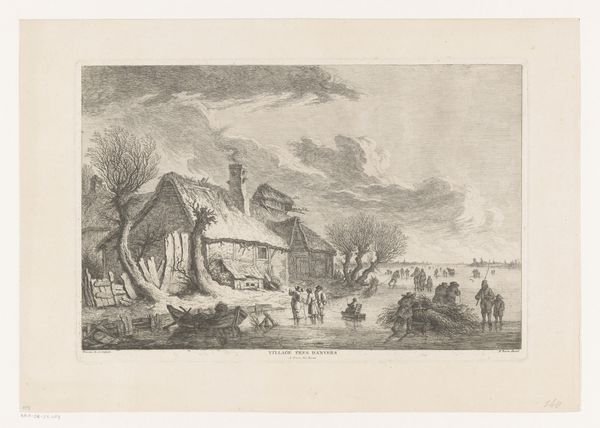
drawing, pencil
#
pencil drawn
#
drawing
#
landscape
#
charcoal drawing
#
pencil drawing
#
pencil
#
realism
Dimensions: height 265 mm, width 375 mm
Copyright: Rijks Museum: Open Domain
Editor: Here we have Jan Fekkes' "Boerderij bij Laren," a pencil drawing from 1916. There's something very calming and almost dreamlike about it, maybe the monochromatic palette and the hazy rendering of the landscape, though the workers add a grounding human element. What's your interpretation of this piece? Curator: It’s fascinating how Fekkes evokes a sense of idyllic rural life just before the height of the First World War. Drawings like this played a key role in constructing a vision of national identity tied to the land. Do you see how the figures seem almost absorbed into the landscape? Editor: Yes, they definitely blend in. Was this common at the time, to sort of idealize the countryside during that period? Curator: Absolutely. Artists like Fekkes were responding to the rapid industrialization and urbanization of the Netherlands. These scenes provided a powerful counter-narrative, promoting a sense of stability and continuity rooted in traditional rural values. This romanticism wasn't just about aesthetics; it served to bolster a sense of collective identity during a time of considerable social upheaval. How do you think that tension between modern life and rural ideal affected its reception? Editor: That's a really interesting point; I hadn't considered the socio-political implications so directly. The drawing now reads like more of a statement, than simply a calming rural scene. Curator: Exactly. Art doesn’t exist in a vacuum; understanding its historical context really changes how we see it, doesn’t it? Editor: It really does. Thanks, that gives me a lot to consider!
Comments
No comments
Be the first to comment and join the conversation on the ultimate creative platform.
